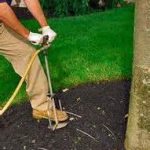JFF: 5 WAYS TO MINIMIZE STORM DAMAGE CAUSED BY TREES
By Jim Skiera, Executive Director, International Society of Arboriculture (ISA)
There are no guarantees that a tree will survive severe storm damage; however, there are steps you can take to keep property damage and repair costs to a minimum. The International Society of Arboriculture (ISA) suggests some practical tips to reduce the likelihood of trees falling victim to a storm’s fury including enlisting the help of ISA certified professionals to help tree owners with the evaluation.
- Survey property for trees showing signs of instability -Look for cracks or cavities in trunks or major limbs, dead or detached branches, or signs of significant leaning. These more obvious signs could be indicators of trees that are unstable and more susceptible to storm damage. Cracks and cavities could be signs of decay in the tree itself; however, dead or detached branches could indicate damage in those areas of the tree only. A tree that leans could have root issues.
- Take action to remedy potential hazards –If unstable trees have been identified, then determine whether failure could have impactful consequences. When trees or parts of trees fail they can cause injury to people or damage to surrounding property. Even healthy trees with branches that hang over the roof or those close to power lines should be evaluated for causing potential damage. The extent of possible damage that could occur if a tree fails can be determined through a Tree Risk Assessment. An arborist who is ISA Tree Risk Assessment Qualified can provide an evaluation and recommendation on mitigation options. Not all trees will fall and of those who do only a small number may actually cause injury to people or damage to property.
- Prevent damage by being proactive –It is an owner’s responsibility to provide for the safety of trees on your property. Once an issue is found, contact a professional to determine the extent of any defects and the likelihood of tree failure in a storm. Recommendations may include having the tree pruned to eliminate defective branches. Perhaps a tree that is leaning could be braced to prevent falling in a storm. In severe cases where the risk assessment is high, removal may be necessary.
- Document tree value – Properly maintained trees may increase property value by up to 20%. Find out if you homeowner’s insurance will cover replacement for damaged trees or cover damage to your landscape due to tree failure in a storm. An ISA Certified Arborist with appraisal experience can provide an estimated value by inspecting your trees. Keep a good record with photos of the trees and the arborist’s evaluation.
- Hire a professional arborist – ISA encourages the hiring of arborists with professional credentials such as those with an ISA certification or qualification. ISA Certified Arborists can develop a master plan for long-term tree care. They can also best determine the course of action for immediate care to help minimize any potential damage from a severe storm. And in the event of tree failure, Certified Arborists can assist with clean-up and plans for replacement.
Being proactive will help reduce risks and increase the safety of your property and that of your neighbors. Plan early before storm season and do not try to do it alone. Remember to hire a professional to help with an evaluation and treatment plan. You can find more information on tree care tips at www.TreesAreGood.org. To learn about ISA, and ISA qualified professionals visit www.isa-arbor.com.
From: http://zpolitics.com/jff-five-ways-to-minimize-storm-damage-caused-by-trees/



